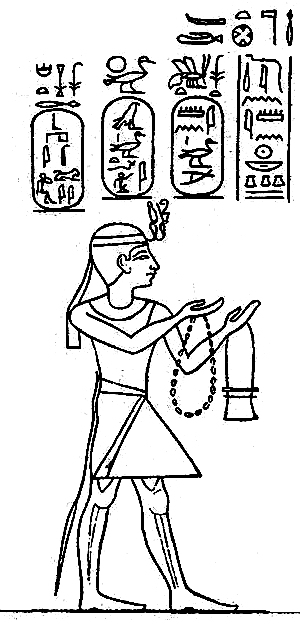Harsiotef on:
[Wikipedia]
[Google]
[Amazon]
Harsiotef was a Kushite King of Meroe (about 404 – 369 BC).
Harsiotef took on a full set of titles based on those of the Egyptian Pharaohs:
''Horus name:'' Kanakht Khaemnepet ("Mighty Bull appears in Napata")
''Nebty Name:'' Nednetjeru ("Who seeks the council of Gods")
''Golden Horus Name:'' Uftikhesutnebut ("Subduer given all the Desert Lands")
''Prenomen:'' Sameryamun ("Beloved son of Amun")
''Nomen:'' Harsiotef ("Horus Son of his Father")
 Harsiotef was the son of Queen Atasamale and likely of King
Harsiotef was the son of Queen Atasamale and likely of King
''Nebty Name:'' Nednetjeru ("Who seeks the council of Gods")
''Golden Horus Name:'' Uftikhesutnebut ("Subduer given all the Desert Lands")
''Prenomen:'' Sameryamun ("Beloved son of Amun")
''Nomen:'' Harsiotef ("Horus Son of his Father")

 Harsiotef was the son of Queen Atasamale and likely of King
Harsiotef was the son of Queen Atasamale and likely of King Amanineteyerike
Amanineteyerike (Amanneteyerike, Aman-nete-yerike, Irike-Amannote) was a Kushite King of Meroe. His reign is dated to the end of the 5th century BCE.
Amanineteyerike took on a full set of titles based on those of the Egyptian Pharaohs.László ...
. He had a wife named Queen Batahaliye and may have had another wife named Queen Pelkha. If Queen Pelkha was his wife, he would also be the father of King Nastasen
Nastasen was a king of Kush (335 – 315/310 BC). According to a stela from Dongola his mother was named Queen Pelkha and his father may have been King Harsiotef. His successor was Aryamani.
He is known from three types of objects. There is ...
. It is possible that King Akhraten was also a son of Harsiotef, and Queen Sakhmakh, the wife of Nastasen, may be his daughter.
He left an inscription dated to his thirty-third regnal year
A regnal year is a year of the reign of a sovereign, from the Latin ''regnum'' meaning kingdom, rule. Regnal years considered the date as an ordinal, not a cardinal number. For example, a monarch could have a first year of rule, a second year o ...
, listing the battles from his successful campaign east of his kingdom against a town called ''Habasa'', whose inhabitants were called Matit. As a result of his victory, the Matit agreed to pay tribute to him.
The name of this place may be the earliest recorded use of the word Habesha
am, ሐበሻ, አበሻ, translit=Häbäša, 'äbäša ti, ሓበሻ, translit=Ḥabäša
, regions =
, languages = Ethiopian Semitic languages
, religions = Predominantly Oriental Orthodox Christianity (Orthodox Te ...
, the etymological basis for English Abyssinia
The Ethiopian Empire (), also formerly known by the exonym Abyssinia, or just simply known as Ethiopia (; Amharic and Tigrinya: ኢትዮጵያ , , Oromo: Itoophiyaa, Somali: Itoobiya, Afar: ''Itiyoophiyaa''), was an empire that historica ...
. The only earlier text which may refer to the term is the mention of a "foreign people from the incense-producing regions" called ''ḫbstjw'' during Queen Hatshepsut
Hatshepsut (; also Hatchepsut; Egyptian: '' ḥꜣt- špswt'' "Foremost of Noble Ladies"; or Hatasu c. 1507–1458 BC) was the fifth pharaoh of the Eighteenth Dynasty of Egypt. She was the second historically confirmed female pharaoh, af ...
's time, which scholars assume refers to the land of Punt and the Habesha
am, ሐበሻ, አበሻ, translit=Häbäša, 'äbäša ti, ሓበሻ, translit=Ḥabäša
, regions =
, languages = Ethiopian Semitic languages
, religions = Predominantly Oriental Orthodox Christianity (Orthodox Te ...
.
Matit is recorded in the reigns of both Harsiotef and Nastasen
Nastasen was a king of Kush (335 – 315/310 BC). According to a stela from Dongola his mother was named Queen Pelkha and his father may have been King Harsiotef. His successor was Aryamani.
He is known from three types of objects. There is ...
. The people of Matit or Matata also fought against the Aksumite
The Kingdom of Aksum ( gez, መንግሥተ አክሱም, ), also known as the Kingdom of Axum or the Aksumite Empire, was a kingdom centered in Northeast Africa and South Arabia from Classical antiquity to the Middle Ages. Based primarily in wh ...
king Ezana
Ezana ( gez, ዔዛና ''‘Ezana'', unvocalized ዐዘነ ''‘zn''; also spelled Aezana or Aizan) was ruler of the Kingdom of Axum, an ancient kingdom located in what is now Eritrea and Ethiopia. (320s – c. 360 AD). He himself employed the ...
centuries later.
Harsiotef was buried in a pyramid at Nuri
Nuri is a place in modern Sudan on the west side of the Nile River, Nile, near the Fourth Cataract. Nuri is situated about 15 km north of Sanam, Sudan, Sanam, and 10 km from Jebel Barkal.
Nuri is the second of three Napatan burial sites ...
(Nu. 13).
References
5th-century BC monarchs of Kush 4th-century BC monarchs of Kush 4th-century BC rulers {{AncientEgypt-stub